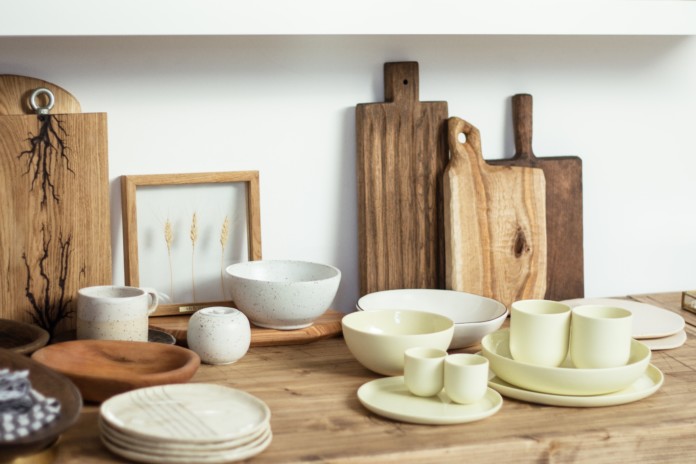There’s an old saying in culinary circles that “presentation is half the flavor.” However, when looking at how a meal presents, it’s not just the food that matters — it’s also the plate or bowl itself.
Dishes come in all shapes, sizes, and materials, and once you start looking at your options closely, it can feel overwhelming. Thankfully, Nate Mell of Felt+Fat, a small Philadelphia-based studio focused on creating custom tableware, is here to guide you in your quest to find the perfect set of dishes.
Over the last several years, Mell and his creative team have made quite the name for themselves, captivating the culinary industry with their handmade to order ware. The porcelain clay pieces evoke a simple yet elegant design, flourishing with pastel colors varied for all seasons, enchanting professional and home chefs alike.
“Whether you’re a restaurateur utilizing tableware to infuse a particular type of atmosphere for food service, or searching for a set of dinnerware to use on a daily basis and for special occasions, it’s helpful to understand the most prevalent options available, from materials, to design and durability,” Mell said.
Materials
Dinnerware comes in many different materials, so let’s look at the top five:
Porcelain
As a non-porous and durable material, porcelain is generally safe in dishwashers, microwaves, and ovens, making it versatile and reliable.
Earthenware
As one of the most ancient materials used for dishes, earthenware gives off a casual vibe while providing meals with a hearty, homey feel.
Stoneware
Stoneware, another durable option, usually has a shiny glaze finish that makes it dependable for everyday use.
Bone China
Considered fine and delicate, most people reserve bone china for special occasions. However, it is chip-resistant and dishwasher/microwave-safe, making it okay for daily use.
Melamine
Ideal for outdoor settings, melamine is shatterproof and can withstand the dishwasher’s heat but is unreliable for oven or microwave use.
Styles
Whether you choose something more formal or casual, it’s important to integrate your style into your dinnerware.
“For tableware design, the biggest questions usually revolve around what type of dining it is… and what is the overall aesthetic,” explained Mell.
Aside from considering colors, you’ll want to decide whether you want something solid, patterned, banded, or hand-painted.
For some people, the best option is to choose a simple, solid color, or even white, and then add in their personalities with accessories like linens, placemats, and chargers.
Practicality and Care
As both an artist and a businessman, Mell emphasized that “all chefs have that ultimate balance of beauty and practicality in mind. They want something unique and beautiful, but they also need to account for the fact that each dish will be handled by potentially dozens of different hands each night.”
In a home setting, practicality means considering how much space you have at the dining table and in your kitchen cupboards.
It’s also important to keep in mind how you want to care for your dishware. If you’re a busy family that relies heavily on the dishwasher, you won’t like something hand-painted that must be washed by hand.
Also, if your dishes are likely to see heavy use, they need durability along with their beauty. “We really rely on restaurants to be a testing ground for our work,” said Mell. “If the wares can’t hold up in a commercial dishwasher and stand the abuse of a busy restaurant, we don’t want to sell it to someone for their home use.”
About Nate Mell
Nate Mell is the founder and CEO of Felt+Fat, a ceramic design studio based in Philadelphia’s Kensington neighborhood. Mell started the Philadelphia-based company in 2014 after graduating from the Tyler School of Art at Temple University and working at the world-renowned Philadelphia Clay Studio.




